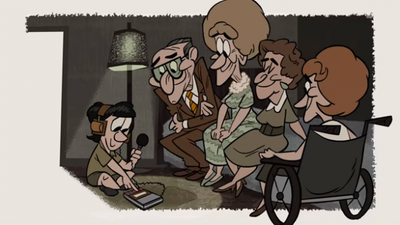This video
looks at a traveling exhibit exploring the civil rights movement of the 1950s and '60s through photographs, including some that have never been seen before, and finds the stories behind the powerful images.
Cameras recorded important figures, like Martin Luther King Jr., and important moments, like Ralph Abernathy taking the first desegregated bus ride in Montgomery, Alabama, young men and women picketing a North Carolina courthouse in 1961, and protesters being attacked by police dogs in Birmingham in 1963.
Curators also uncovered unseen works, like a sequence of photos of the firebombing of a bus bearing "Freedom Riders" in Anniston, Ala., in 1961.
There are also modern works that represent the civil rights struggle in a new way.
The video enables students to make connections between the past and the present, and debate how the images and symbols of the civil rights movement have changed over time.
Quotes
"The power of those photographs, with the fire hoses, the dogs jumping on young people because they were demonstrating, the police with their billy clubs, all of those influenced me to go to Mississippi, when I had just two weeks earlier declined to participate." - Doris Derby, Photographer
"This is sort of like a give-and-take, that you kind of remember where you're coming from, but also have the hope of moving forward." - Nadine Robinson, Artist
Warm Up Questions
1. What is photojournalism?
2. "A picture is worth a thousand words" -- what does this saying mean? When are pictures more powerful than words? When are they not?
3. What was the civil rights movement of the 1950s and '60s? How might photography have affected the movement?
Discussion Questions
1. Which of the pictures in the video did you find most compelling? Had you ever seen them before?
2. What do you think of curator Julian Cox's statement that images of this subject matter seem to be able to "really connect to people in that kind of powerful, direct way?"
3. If you had been alive in the 1960s, how might these photos have affected your opinions or your actions?
4. What was the most important event in the civil rights movement? Why?
5. Do you think current technologies such as FLICKR or YouTube would have changed the civil rights movement of the 1960s? How, or why not?
Additional Resources
Transcript of this report
Students at the center discuss the event and its legacy
Brown vs. Board of Education - 50 years later
Powerful Photos Tell Story of Civil Rights Movement

Copyright © 2025 NewsHour Production LLC. All Rights Reserved
Illustrations by Annamaria Ward

